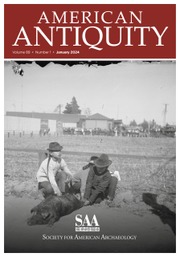Article contents
Historical Aspects of the Calaveras Skull Controversy
Published online by Cambridge University Press: 20 January 2017
Abstract
In February 1866, workers found a human skull deep in a mine in Calaveras County, California, believed at first to be of Pliocene age. It was passed through several hands before reaching J. D. Whitney, State Geologist of California and Professor of Geology at Harvard University. While some scientists accepted it on face value, other scientists and the public press refused to believe it and even ridiculed the claim. Some believed it was a “plant,” while others had faith in the reports of the miners, which led to a long controversy. Apparently two skulls became confused in transmission from one person to another, but in the end they were identified as fossilized Indian skulls of modern type, and it was finally admitted that the one taken from the mine was “planted” as a joke.
- Type
- Reports
- Information
- Copyright
- Copyright © The Society for American Archaeology 1986
References
References Cited
- 3
- Cited by


